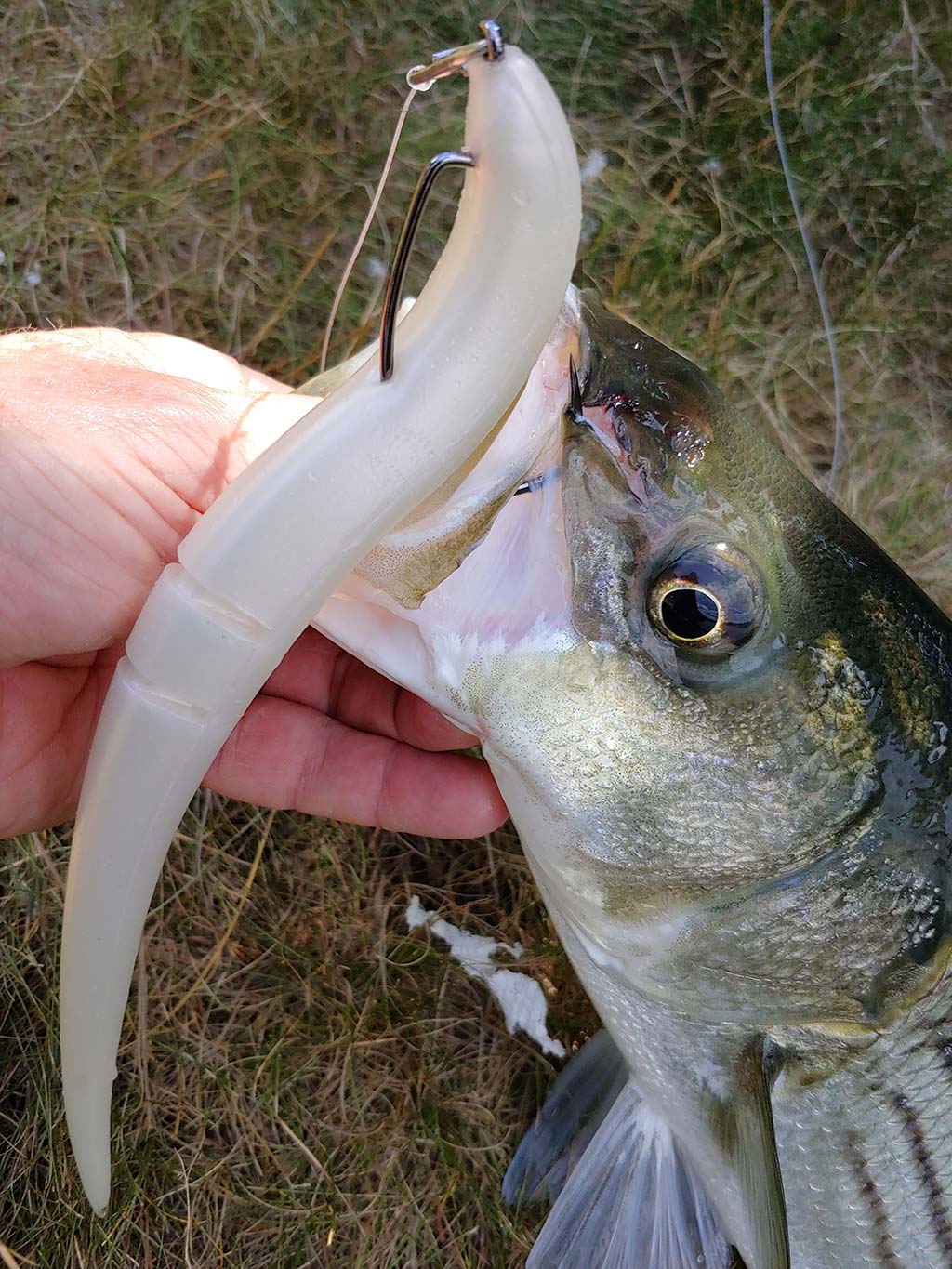
Large, unweighted plastics can be your secret weapon in the Big Ditch
Last year I took a completely different approach to fishing the Cape Cod Canal. In the past, like just about everyone else, I fished the Ditch with big plugs and jigs. These included thigs like Magic Swimmers, large pencils, Stick Shadds and large plastic bodied jigs—like the Savage Sand Eel. However, with an abundance smaller fish around last year, both slot limit keepers as well as hefty schoolies, I wanted to avoid the larger treble hooked plugs that inflicted the most damage on fish I intended to release. So, I opted for a big change, going with single hooked skinny plastic. For me, the results were a game changer.
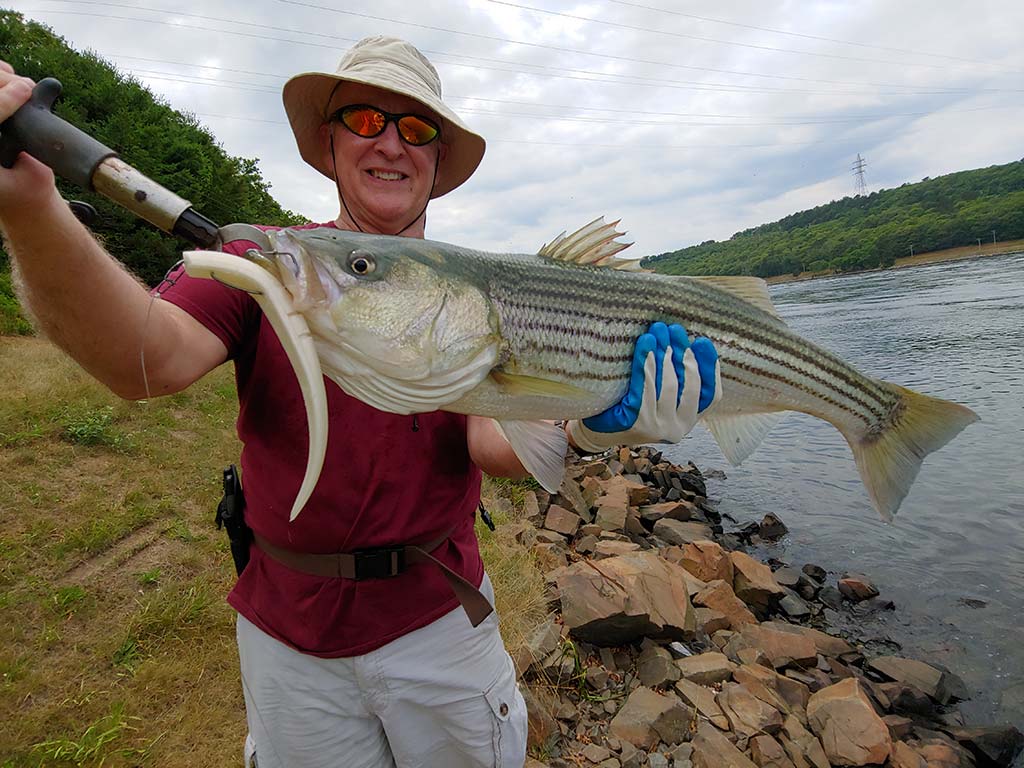
Atypical Arsenal
I know most fishermen who fish the Canal want to cast as far as they can with the biggest plug they can throw. Admittedly, that does work out in a lot of cases, especially when you find fish breaking way out in the middle. And, I know there is no greater thrill than to watch a big striper come up and slam a pencil popper on the surface. However, if you really look at what’s going on at the Canal, you will also find a lot of activity right in close, sometimes a flip cast away from where you’re standing. Working that edge is just like working the wash along a drop away beach. A lot of fish and bait use that edge to move along a shoreline, and the Canal is no different.
I’m a big fan of skinny plastic, and I use it a lot in Rhody. I’m talking lures like Slug-Go’s and Hogys. These lures will swim, dart and wiggle with an alluring dance that just begs to be slammed by aggressive stripers. These have been my go-to lures in many places throughout the years, but rarely have I used them in the Canal until last year. For me, fishing the Canal was always a matter of snapping on something big that would cast far, and skinny plastic did not fit the bill.
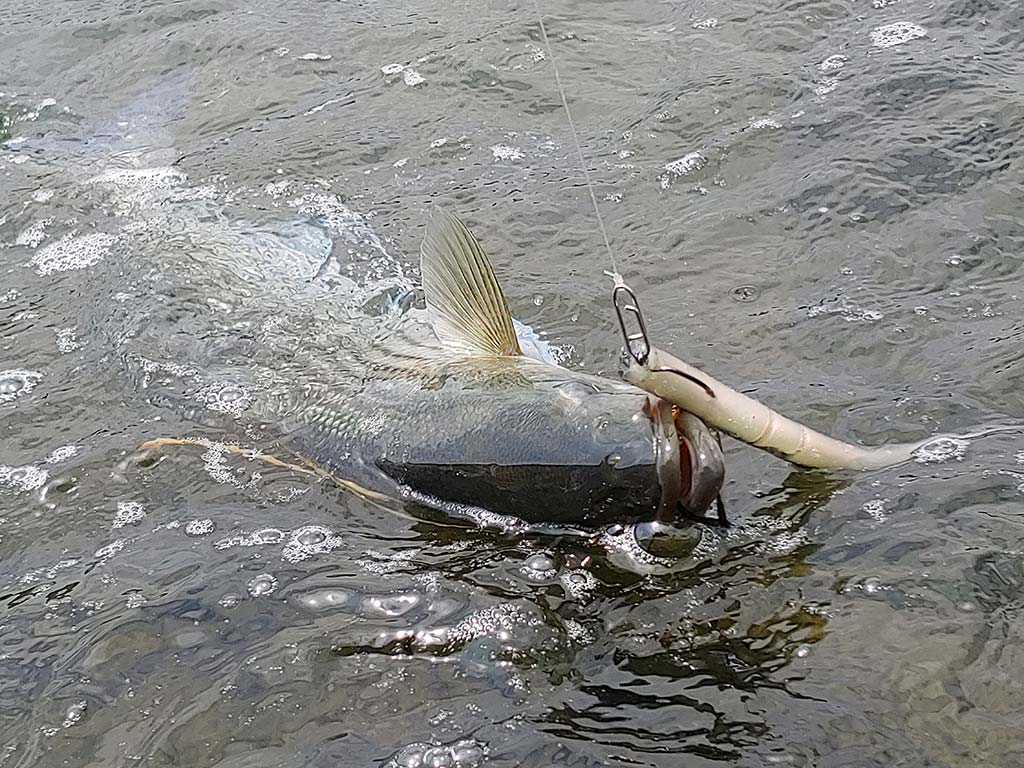
I Was Sold
I stocked a number of skinny plastic lures in my bag last year to try at the Canal. I also had my old standby big plug selection in case the fish were breaking out far. I was carrying mostly white and rainbow trout (looks more like mackerel) 12-inch Slug-Gos that were rigged with size 7/0 wide gap worm hooks (Gamakatsu Monster EWG). I rigged my skinny lures Texas style with a single hook in the head of the lure.
It was on one of my June outings when I became sold on the effectiveness of skinny plastic at the Canal. As I was riding my bike along looking for fish, I suddenly spotted a disturbance on the surface in one location about ten feet from shore along a weed line. It was mackerel nervously moving along. An occasional big swirl gave away the stripers’ presence. All of this was happening about ten feet off the shore.
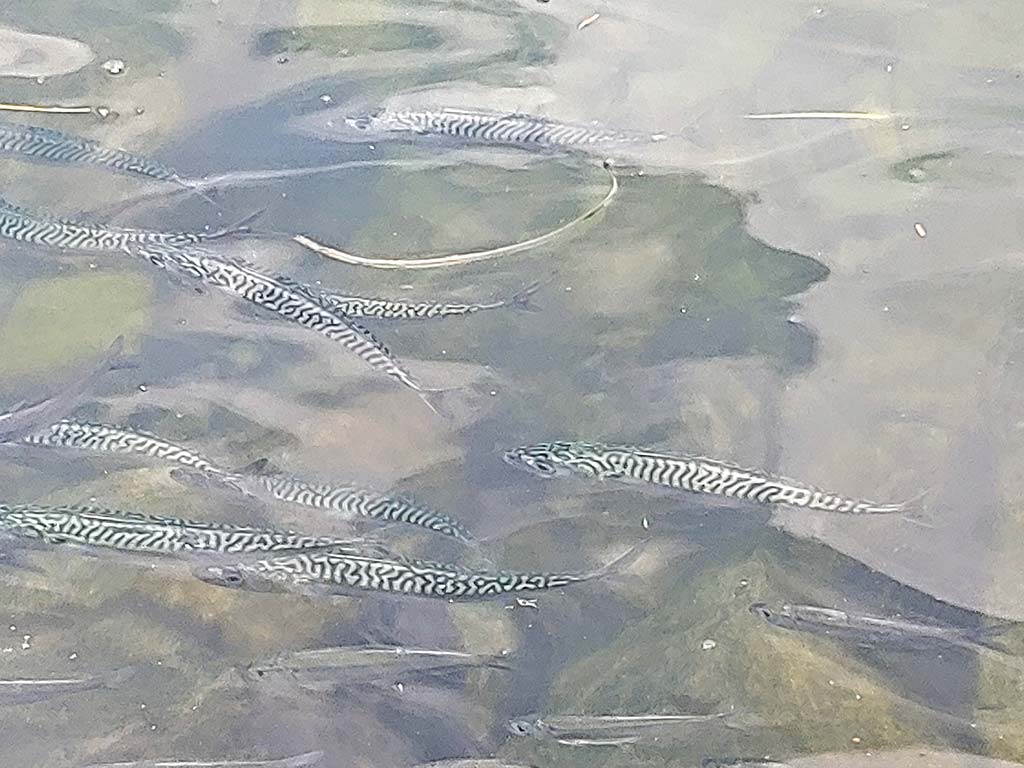
I quickly scrambled down the rocks and began casting my rainbow trout colored Slug-Go into the fray. Instead of casting way out, I was casting just about parallel to the shore because that was the feeding zone. I wanted my Slug-Go swimming against the current and right along that weed line where the drop off was located. In an hour of fishing, I had hits and fish just about every cast. I could even see fish following my lure in when I wasn’t getting hits. Could I have had the same success with traditional swimmers and bigger plugs? I don’t know, but what I do know was that it was sure easier to unhook these fish I was catching (hefty schoolies and small slots) with that single hook than fiddling with multiple treble hooks. The single hook also did far less damage than the trebles. I was sold.
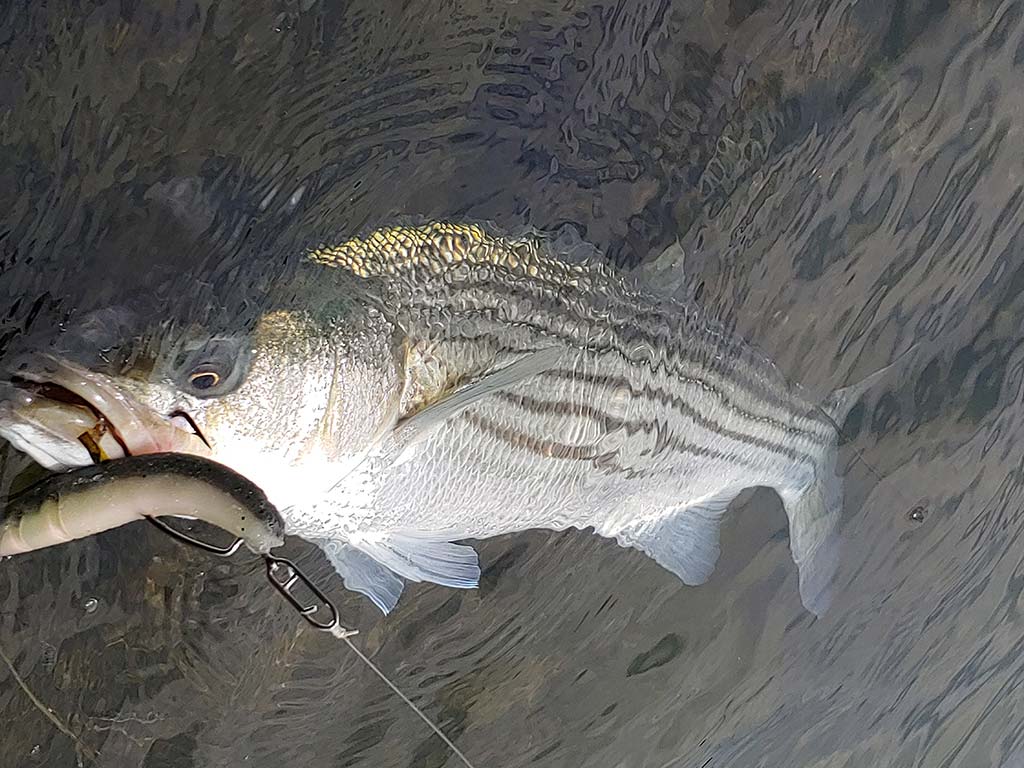
Focus On The Edge
As the summer wore on and I continued to fish the Canal regularly, I really learned to focus on and work the edge. When most fishermen look at the Canal, they see one big raging river in which the water all seems to move east or west depending on the tide. However, as you get close to the rocky shoreline, you realize there are many nooks and crannies, small rockplies that jut out, big boulders and even rocky bars that line the craggy shore. This structure causes the Canal to move differently in those places setting up eddies and small rips where the current might actually move in a different direction than the main flow. These spots can also set up ambush points or staging spots where stripers might sit and wait for the chance to pounce. You can best find these unique spots at dead low tide when the edge of the Canal is fully exposed.
It is those places where the bottom and the current do something differently that I have had my best success with my skinny plastic, even when no big numbers of stripers are around. I have noted a number of pole locations where these special spots exist, and I am always on the lookout for more of these locations. On those days when no big blitzes were happening, I often rode my bike to each of these spots, make some casts and generally lured a fish or two to hit my skinny plastic.
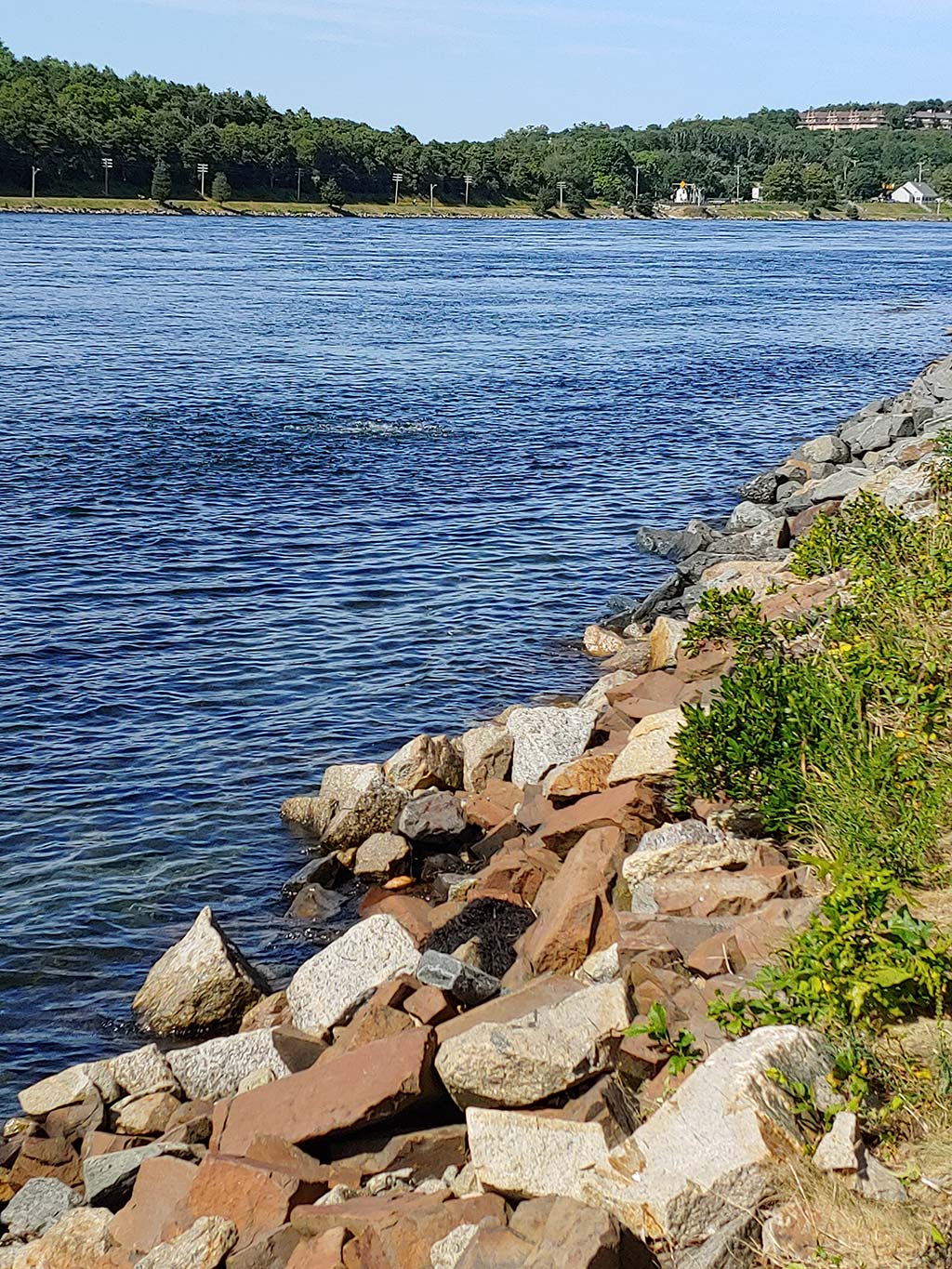
A Methodical Approach
As for actually fishing the skinny plastic, I usually start off fishing a location by casting almost parallel to the shore in the direction of the current. I will let the lure sink a bit and then just twitch the rod tip while reeling very slowly. Oftentimes, I will stop reeling and just let the current do the work. Many times a fussy fish will hit as the lure stops. If I get no hits close to shore I will make more and more casts outward fanning out to about 90 degrees until I am casting straight across into the main current of the Canal. Wind will be a big factor as to how far you can cast this lure.
In the past I have tried weighting my skinny plastic with weighted swimbait hooks and nail weights, but I do not find that as effective as an unweighted lure. While the weight will deliver more distance the added weights deaden the action. In my mind the better action has the advantage.
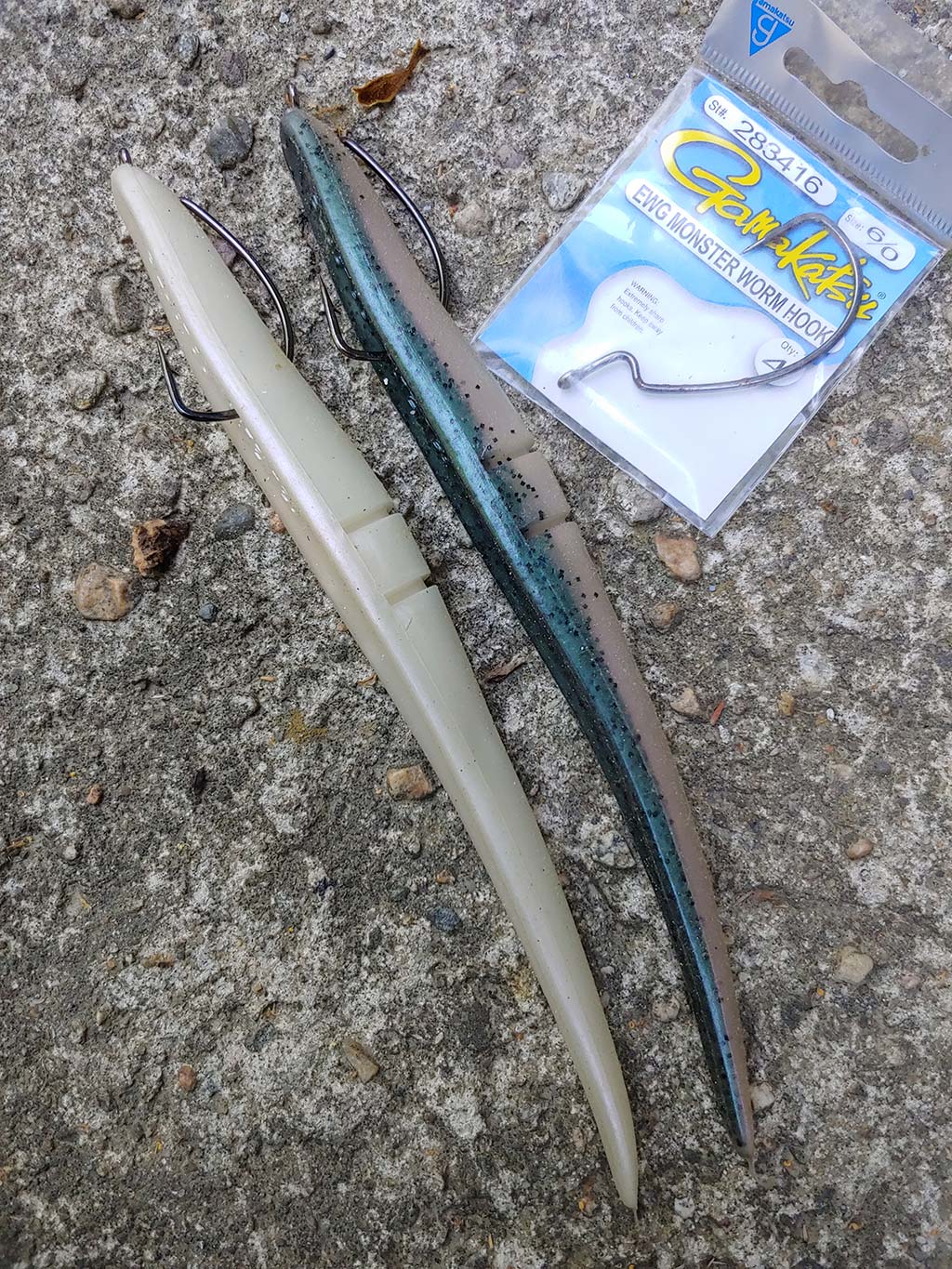
The Canal is just like any other place you are fishing for stripers, and one particular lure just doesn’t do it all the time. I would continue to fish the Canal last summer with Slug-Go’s as my primary lure. While this lure would have great fish luring advantages, the main disadvantage would be trying to cast any distance. It worked great when fish were in close, no good when fish were busting or feeding out far which happened at times, and when it did, I swapped the plastic for a pencil popper and cast to the breaking fish.
I am guessing the Canal will fish similar this year to what we saw in 2020. Expect to see loads and loads of hefty schoolies with good numbers of slot limit keepers in the mix. There might even be a run of larger 40-inch fish, but not like what we have seen in years past. Most people will be releasing everything they catch and that single hooked lure will make releasing so much easier and better for the fish. You’ll never find skinny plastic on most Canal sharpie’s top five list of lures, but I can tell you it will be one of my main go-to lures again this year in the Canal.


